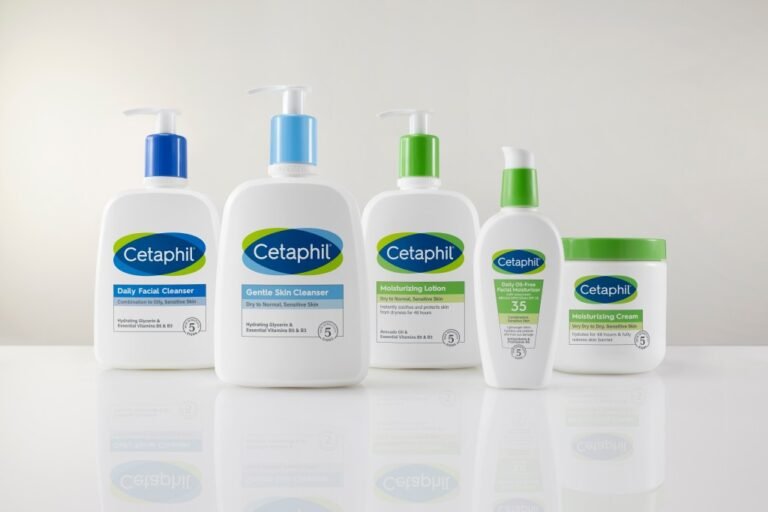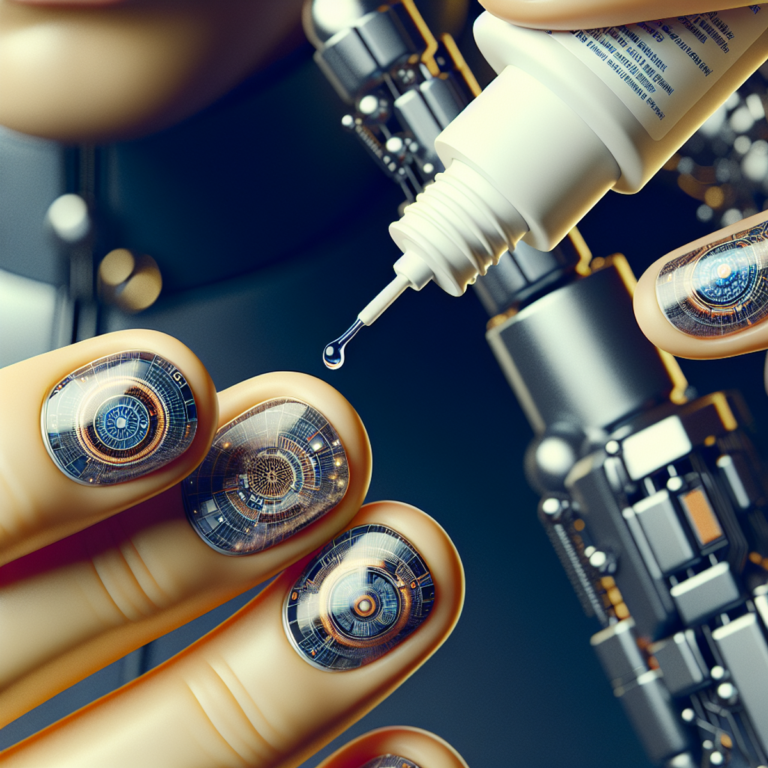4 Types of Pimples and How to Treat Them

Introduction
Acne is a common skin condition affecting millions worldwide, often leaving lasting impacts on skin health and self-esteem. It manifests in various forms, each with unique characteristics and treatment needs. Understanding the 4 types of pimples is crucial for effective acne treatment and prevention strategies.
Pimples are not all created equal. Recognizing the differences between them can guide you toward the best skincare routine to combat acne effectively. Different types of pimples require distinct treatments, which can range from over-the-counter remedies to professional interventions. This knowledge can empower you to tackle concerns like how to remove pimple marks, how to get rid of small bumps on face, or how to get rid of red marks left by spots efficiently.
In this article, you’ll discover:
- Definitions and characteristics of the four main types of pimples.
- Effective treatment options tailored for each type.
- General strategies for managing and preventing future breakouts.
- Insights into natural remedies and when to seek professional help.
By the end, you’ll be equipped with practical tips for maintaining healthier skin and boosting your confidence.
1. Understanding Pimples
Pimples, often associated with acne, are a common skin condition that affects individuals of all ages. They appear as small, red bumps on the skin and can be uncomfortable and embarrassing. Knowing how they form and what causes them is essential for effective treatment.
What Are Pimples and How Do They Relate to Acne?
- Pimples: These are localized inflammations of the skin caused by clogged pores. When these pores become blocked with excess oil, dead skin cells, or bacteria, it leads to the formation of various types of pimples.
- Acne: A broader term that includes different kinds of skin issues like pimples, blackheads, whiteheads, nodules, and cysts.
How Do Pimples Form?
1. Hair Follicles
Each pore on your skin opens up into a follicle. A hair follicle is made up of a hair shaft and sebaceous glands that produce sebum (oil). This sebum travels up the hair shaft and out through the pore, helping keep your skin moisturized.
2. Clogging Process
- Dead skin cells can build up in the follicles.
- Excess oil production can make this buildup worse.
- Bacteria, especially Propionibacterium acnes, thrive in this environment, leading to inflammation.
3. Inflammation
When a follicle becomes plugged and infected with bacteria, it swells into a pimple.
Common Myths About Pimples
- Diet Alone Causes Pimples: While diet can affect acne severity, it’s not the only cause. Hormones, genetics, and skincare routines also play significant roles.
- Popping Pimples Helps Them Heal Faster: Squeezing or popping pimples can actually make inflammation worse and increase the risk of scarring rather than speeding up recovery.
- Only Teenagers Get Acne: Although acne is common among teenagers due to hormonal changes during puberty, adults can also experience acne due to stress, hormonal imbalances, or other factors.
Understanding these aspects sets the stage for exploring effective strategies on how to get rid of pimples. Whether you’re looking for quick fixes or long-term solutions for pimple scars removal techniques , knowing how pimples form is key in finding suitable treatments.
2. The Four Types of Pimples
Papules
Papules are one of the more common types of pimples you might encounter. They are small, raised bumps that can be red or pink in color. Unlike some other types of acne, papules do not have a whitehead or pus-filled center. Their appearance is often characterized by a firm texture, making them noticeable to the touch.
Characteristics of Papules
- Size: Typically small and round.
- Color: Red or pink, due to inflammation.
- Texture: Firm and solid without a visible pus-filled center.
These characteristics make papules distinct from other acne forms such as pustules, which contain pus.
Causes of Papules
The formation of papules is primarily attributed to the rupture of a hair follicle wall. When this occurs, cellular debris and bacteria spill into the surrounding dermis, leading to inflammation and the characteristic red bump. This process is part of an inflammatory response by your skin as it attempts to contain and heal the damage caused by the rupture.
Factors contributing to the development of papules include:
- Excessive oil production
- Bacterial buildup
- Hormonal fluctuations
- Certain medications or cosmetic products
Understanding these causes can help you take preventive measures against papule formation.
Treatment Options
When it comes to treating papules, several over-the-counter (OTC) products can be effective. These treatments aim to reduce inflammation and prevent further breakouts:
- Salicylic Acid: A popular ingredient found in many OTC acne products. Salicylic acid helps exfoliate the skin and unclog pores, reducing the likelihood of follicle rupture.
- Topical Retinoids: These are derivatives of vitamin A that promote cell turnover and prevent clogging in hair follicles. They are particularly useful for treating various types of acne, including papules.
In addition to these treatments, maintaining a consistent skincare routine is crucial. Incorporating gentle cleansers, non-comedogenic moisturizers, and regular exfoliation can help manage existing papules while preventing new ones from forming.
For those seeking alternative treatment methods, natural remedies may offer relief. Ingredients such as tea tree oil have shown effectiveness in reducing redness and inflammation associated with papules and other types of pimples.
Dealing with papules doesn’t have to be overwhelming; understanding their characteristics and causes can guide you toward selecting appropriate treatment options that work best for your skin type.
Pustules
Pustules are a distinct type of pimple, recognizable by their appearance and how they form. These pus-filled bumps usually show up as red spots with a white or yellow center, indicating the presence of pus under the skin. They develop when pores get clogged with too much oil and dead skin cells, causing bacteria to grow and leading to inflammation.
Differences Between Pustules and Papules
While both pustules and papules are inflammatory types of pimples, they differ notably in their characteristics:
- Pustules: Contain pus, appearing with a red base topped by a white or yellow head. They are generally more tender and can cause discomfort.
- Papules: Lack a visible head and present as small, raised red bumps without pus. They tend to be less painful but can progress into pustules if not managed properly.
Effective Treatments for Pustules
Addressing pustules involves targeting both bacterial growth and inflammation. Here are some effective treatment methods:
- Topical Treatments: Over-the-counter options like benzoyl peroxide and salicylic acid can help reduce inflammation and kill bacteria. These treatments are also useful for managing other concerns such as how to get rid of bumps on face, how to get rid of tiny bumps on face quickly, and how to stop pimples coming on face.
- Antibiotics: For more severe cases, dermatologists might prescribe topical or oral antibiotics to combat bacterial infection and reduce swelling. This approach is often considered when seeking solutions for how to get rid of under the skin pimples or persistent pustular outbreaks.
Maintaining a consistent skincare routine is crucial not only for treating existing pustules but also for preventing new ones from forming. Implementing these treatments can also aid in managing issues like pimple scar removal cream, how to remove pimple scars naturally, and how to get rid of spot scars.
Nodular Acne
Nodular acne is a more severe form of acne characterized by large, painful lumps that develop deep within the skin. Unlike papules and pustules, nodules do not come to a head and are often more stubborn to treat. These deep-seated lumps can cause significant discomfort and may lead to scarring if not addressed properly.
Causes and Symptoms:
- Size and Depth: Nodules are larger than typical pimples, often measuring over 5 millimeters in diameter. They are embedded deep under the skin, making them both painful and persistent.
- Formation Process: Nodular acne occurs when a severe rupture of the hair follicle wall allows debris and bacteria to penetrate deeper layers of the skin. This triggers an intense inflammatory response, resulting in the formation of these hard, painful lumps.
- Symptoms: Along with pain, nodular acne is often accompanied by redness and inflammation around the affected area.
Recommended Treatments:
For those suffering from nodular acne, over-the-counter treatments are typically insufficient. The best course of action involves prescription medications such as isotretinoin. This potent medication works by reducing oil production in the skin, decreasing inflammation, and preventing future breakouts.
In addition to isotretinoin, a dermatologist may recommend:
- Corticosteroid Injections: To reduce inflammation quickly.
- Oral Antibiotics: To help control bacterial growth and reduce inflammation.
- Hormonal Treatments: For cases linked to hormonal imbalances.
Addressing nodular acne requires patience and consistent treatment. Seeking professional advice can be crucial in managing this severe type of acne effectively. Understanding how to get rid of under-the-skin pimples overnight might not always be feasible with nodular acne due to its severity, yet following prescribed treatments provides a pathway to clearer skin.
Recognizing nodular acne’s unique characteristics sets the stage for understanding other complex skin issues like cystic acne.
Cystic Acne
Cystic acne is one of the most severe forms of acne. It’s characterized by large, fluid-filled lumps beneath the skin’s surface. These cysts occur when deep follicle wall breakage allows pus and bacteria to spread into adjacent tissue, leading to inflammation and swelling. Unlike other types of pimples such as papules or pustules, cystic acne often results in significant discomfort due to its depth and size.
The risks associated with untreated cysts include persistent pain and potential scarring. Without proper management, cystic acne can leave noticeable marks on the skin long after the inflammation has subsided. This can impact self-esteem and may require additional treatments focused on pimple scar removal, such as topical creams or professional dermatological procedures.
Treatment for Cystic Acne
Treatment for cystic acne typically involves more intensive methods compared to other pimple types:
- Prescription medications like isotretinoin are frequently recommended due to their ability to reduce oil production and inflammation effectively.
- In some cases, surgical removal of the cysts might be necessary, especially if they do not respond to medication or are causing severe distress.
For those seeking alternative approaches on how to eliminate these deep pimples, the use of pimple remedies that focus on soothing inflammation might provide temporary relief. However, it’s crucial to understand that home remedies for pimples are not substitutes for medical treatments when dealing with cystic acne.
Consulting a dermatologist at the onset of this condition can prevent complications and aid in finding the best way to get rid of these painful lesions.
Whether you’re exploring options on how to shrink a cystic pimple overnight or searching for long-term solutions like how to stop pimples coming on face consistently, understanding these treatment methods is essential for effective management.
3. General Strategies for Treating Pimples Effectively
A consistent skincare routine is crucial in managing all types of pimples, whether you’re dealing with papules, pustules, nodular acne, or cystic acne. A well-structured regimen helps cleanse the skin, remove excess oil, and prevent clogged pores, reducing the risk of breakouts.
Skincare Routine Essentials
- Cleansing: Choose a gentle cleanser suitable for your skin type to remove dirt, oil, and makeup without stripping your skin’s natural moisture. Cleansing twice daily helps maintain balance and reduce irritation.
- Exfoliation: Regular exfoliation removes dead skin cells that can block pores. Opt for chemical exfoliants like salicylic acid or glycolic acid to gently slough off surface debris without causing micro-tears.
- Moisturizing: Even oily skin needs hydration. Use a non-comedogenic moisturizer to keep your skin balanced and protect the barrier function.
- Targeted Treatments: Incorporate products containing active ingredients like benzoyl peroxide or topical retinoids to address specific concerns such as inflammation or bacteria buildup.
- Sun Protection: Apply sunscreen daily to protect your skin from UV damage, which can exacerbate acne and cause pigmentation issues.
Dietary Considerations
- Limit High-Glycemic Foods: Consuming foods high in refined sugars and carbohydrates may spike insulin levels, potentially increasing sebum production and worsening acne.
- Incorporate Anti-Inflammatory Foods: Foods rich in omega-3 fatty acids (e.g., salmon, flaxseeds) and antioxidants (e.g., berries, green leafy vegetables) can help reduce inflammation associated with pimples.
- Stay Hydrated: Drinking sufficient water aids in flushing out toxins from the body and maintaining healthy skin hydration levels.
Quick Fixes and Myths
While many search for quick solutions like “how to get rid of pimples in 5 minutes” or “how to get rid of pimples on forehead overnight,” it’s important to manage expectations. True pimple treatment strategies require patience and consistency. Beware of myths such as toothpaste applications or excessive scrubbing; these can irritate the skin further.
Natural Remedies
For those interested in how to remove pimples naturally at home, options like tea tree oil have shown promise due to their antibacterial properties. It’s essential to test these treatments on a small patch of skin first to avoid adverse reactions.
By adopting these comprehensive strategies, you create an environment where pimples are less likely to thrive while promoting overall skin health. As you continue on this journey towards clearer skin, understanding these components will aid in crafting an effective plan tailored to your unique needs.
4. Natural Remedies for Pimples that Work Fast
Exploring natural remedies for pimples is an appealing option for those seeking gentle yet effective solutions. These remedies often focus on reducing inflammation and redness, offering a soothing alternative to harsher chemical treatments. Here are some popular natural options that may help you address various types of pimples quickly:
Tea Tree Oil
Tea tree oil is well-known for its ability to fight bacteria and reduce inflammation. It can be particularly effective in targeting bacteria that contribute to acne formation.
- How to Use: Mix tea tree oil with a carrier oil like coconut or jojoba oil (1 part tea tree oil to 9 parts carrier oil) before applying it to the affected area using a cotton swab.
- Benefits: It helps reduce redness and swelling, promoting faster healing of pimples.
Aloe Vera
Aloe vera is another natural remedy celebrated for its soothing and healing properties. It can be especially beneficial for those seeking how to get rid of zits fast and how to get rid of blind pimples due to its calming effects on the skin.
- How to Use: Apply pure aloe vera gel directly from the plant or purchase an organic version free from additives. Spread a thin layer over the pimple-prone areas.
- Benefits: Provides moisture without clogging pores, reduces inflammation, and accelerates skin repair.
Witch Hazel
Witch hazel acts as a natural astringent, which can help in drying out existing pimples and soothing irritated skin—ideal for those looking into pimple solution techniques at home.
- How to Use: Dab witch hazel onto clean skin using a cotton pad, focusing on areas with active breakouts.
- Benefits: Reduces excess oil production and minimizes pore size.
Green Tea Extract
Rich in antioxidants, green tea extract can neutralize harmful substances on the skin that worsen acne. This makes it an excellent choice for individuals wanting to know how to stop pimples coming on face at home.
- How to Use: Brew green tea, let it cool, then apply it onto the skin using a clean cloth or cotton ball. Alternatively, look for skincare products containing green tea extract.
- Benefits: Combats bacteria while providing antioxidant protection.
Honey
Honey has natural antibacterial properties that can help heal acne-prone skin while keeping it hydrated; it’s especially beneficial when learning how to cure pimples naturally.
- How to Use: Apply raw honey as a spot treatment or use it as a mask by spreading evenly across your face.
- Benefits: Draws out impurities and provides a moisturizing effect without aggravating sensitive skin.
Natural remedies offer diverse strategies on how to make pimples go away, yet effectiveness varies depending on individual skin types and conditions. Consistency in application along with patience plays a critical role in achieving desired results.
5. How to Prevent Future Breakouts
When it comes to preventing pimples from coming back, adopting certain habits can make a significant difference. Here are some key strategies you can incorporate into your daily routine to minimize breakouts and maintain clear skin.
Maintain Good Hygiene Practices
- Regular Cleansing: Wash your face twice daily using a gentle cleanser suitable for your skin type. This helps remove dirt, oil, and impurities that can clog pores, reducing the risk of new pimples forming.
- Avoid Touching Your Face: Hands collect bacteria throughout the day. Touching your face transfers these germs, potentially leading to new breakouts or making existing ones worse.
- Clean Pillowcases and Towels: Change pillowcases at least once a week and use clean towels to prevent transferring bacteria back onto your skin.
Follow a Balanced Diet Rich in Antioxidants
The food you consume plays a crucial role in your skin’s health. Embrace a diet that promotes clear skin by including:
- Fruits and Vegetables: High in antioxidants, fruits and vegetables help combat inflammation and free radicals that may contribute to acne development.
- Omega-3 Fatty Acids: Found in fish like salmon and walnuts, omega-3s have anti-inflammatory properties that can help reduce acne symptoms.
- Limit Sugary and Processed Foods: High-sugar diets can lead to increased sebum production, which may result in clogged pores and subsequent breakouts.
Manage Stress Levels Effectively
Stress triggers hormonal changes in the body, which can make acne worse. Incorporate stress-reducing techniques such as:
- Meditation or Yoga: These practices promote relaxation and help regulate stress hormones linked to acne flare-ups.
- Regular Exercise: Physical activity increases blood flow, helping nourish skin cells and keep them healthy while reducing stress levels.
Additional Tips for Specific Concerns
For those dealing with specific issues like how to get rid of tiny bumps on forehead or how to clear pimples, consider incorporating targeted treatments into your routine:
- Spot Treatments: Use treatments with ingredients like benzoyl peroxide or salicylic acid to target individual blemishes.
For men wondering how to get rid of pimples on pubic area male, maintaining proper hygiene is essential:
- Gentle Cleansing: Use mild cleansers designed for sensitive areas to avoid irritation while keeping the area clean.
Addressing pigmentation concerns like how to remove dark spots caused by pimples overnight might require patience:
- Topical Lightening Agents: Ingredients like vitamin C or niacinamide can help gradually lighten dark spots over time.
Emphasizing good habits ensures not just the prevention of future breakouts but also supports overall skin health. Each step contributes significantly towards achieving clearer skin, reducing the likelihood of dealing with persistent acne issues again.
6. When to Seek Professional Help for Persistent Acne Issues
Knowing when to see a dermatologist for severe acne is crucial for effective treatment. If over-the-counter treatments aren’t working after a long time, it might be time to get professional advice. Dermatologists can offer specialized treatments for stubborn types of acne like cystic or nodular acne, which often need stronger prescription medications.
Persistent pimples, whether on the face or body, can be frustrating and sometimes painful. You may have tried various methods on how to reduce pimple redness in 5 minutes, or sought ways to get rid of teenage pimples naturally at home. While home remedies can offer temporary relief, they might not address the root cause of severe acne.
For those seeking fast solutions, there are tips on how to remove pimples overnight at home, focusing on quick fixes like spot treatments with benzoyl peroxide. However, recurring issues such as pimples on buttocks or constant breakouts on the chin may indicate deeper skin concerns that need professional evaluation.
If you’re struggling with how to stop pimples coming on face permanently, a dermatologist can help you develop a personalized skincare routine that suits your skin type and lifestyle. Expert advice is invaluable when standard methods fail to show results, ensuring you can tackle stubborn acne effectively and regain confidence in your skin’s health.
Conclusion
Understanding the 4 Types of Pimples and How to Treat Them is an essential step towards achieving a healthy complexion. Each type—papules, pustules, nodules, and cysts—requires specific treatments that address their unique characteristics.
Taking care of your skin involves adopting consistent skincare routines and making lifestyle adjustments. Learn how to get rid of bumps on your face by incorporating products with active ingredients like salicylic acid or retinoids. For those seeking how to prevent pimples on face forever, maintaining good hygiene and balanced nutrition plays a crucial role.
For non-inflammatory concerns like how to remove blackheads and whiteheads permanently, regular exfoliation can be beneficial. Severe cases, such as nodular or cystic acne, often necessitate professional consultation.
Embrace these strategies in your daily life to effectively manage and get rid of pimples, ensuring your skin remains clear and vibrant. Whether you’re dealing with bumps on arms or legs, or you want to know how to get a pimple-free face in an hour, proactive care is key.
FAQs (Frequently Asked Questions)
What are the four types of pimples?
The four types of pimples are papules, pustules, nodular acne, and cystic acne. Each type has distinct characteristics and requires different treatment approaches.
How do pimples form?
Pimples form when hair follicles become clogged with excess oil, dead skin cells, and bacteria. This process can lead to inflammation and the development of various types of acne.
What are effective treatments for papules?
Effective treatments for papules include over-the-counter products containing salicylic acid or topical retinoids that help reduce inflammation and promote skin cell turnover.
How can I treat pustules at home?
To treat pustules at home, you can use topical treatments such as benzoyl peroxide or salicylic acid. In some cases, antibiotics may be recommended by a healthcare provider to reduce inflammation.
What is nodular acne and how is it treated?
Nodular acne consists of painful lumps that form deep within the skin. Treatment typically involves prescription medications like isotretinoin or other therapies directed by a dermatologist.
What steps can I take to prevent pimple marks?
To prevent pimple marks, avoid picking or squeezing pimples, use non-comedogenic skincare products, and consider using treatments that promote healing and reduce inflammation.










